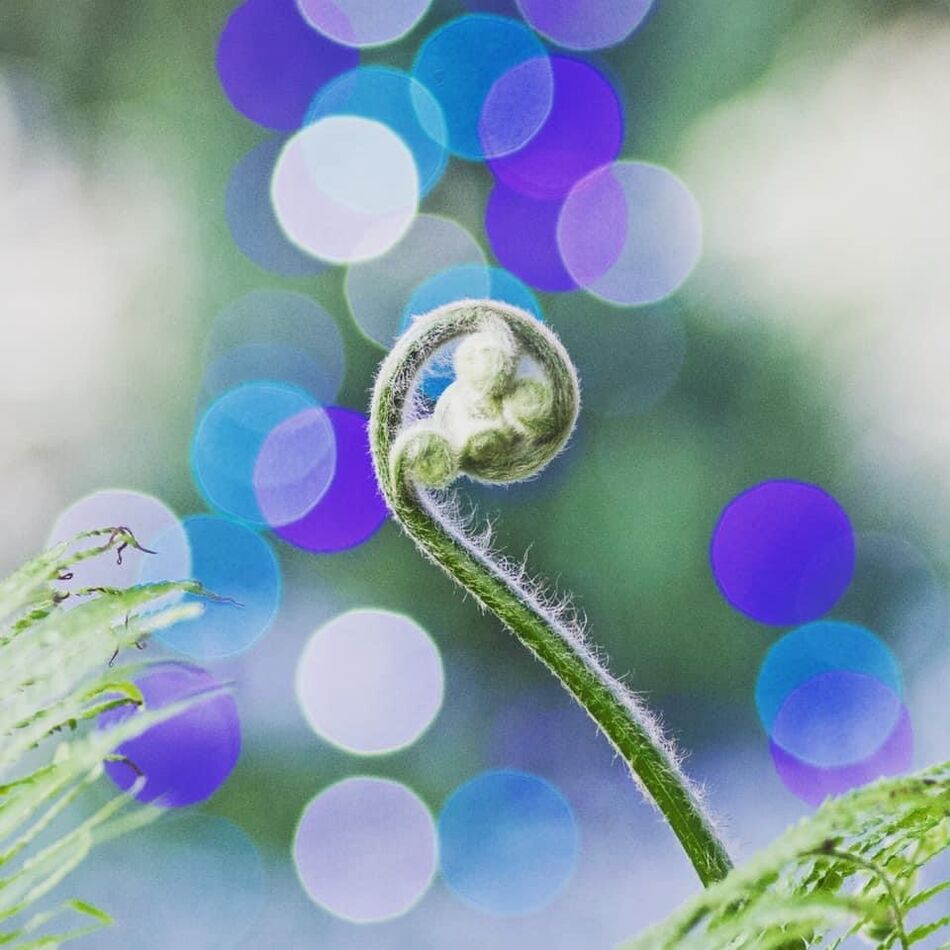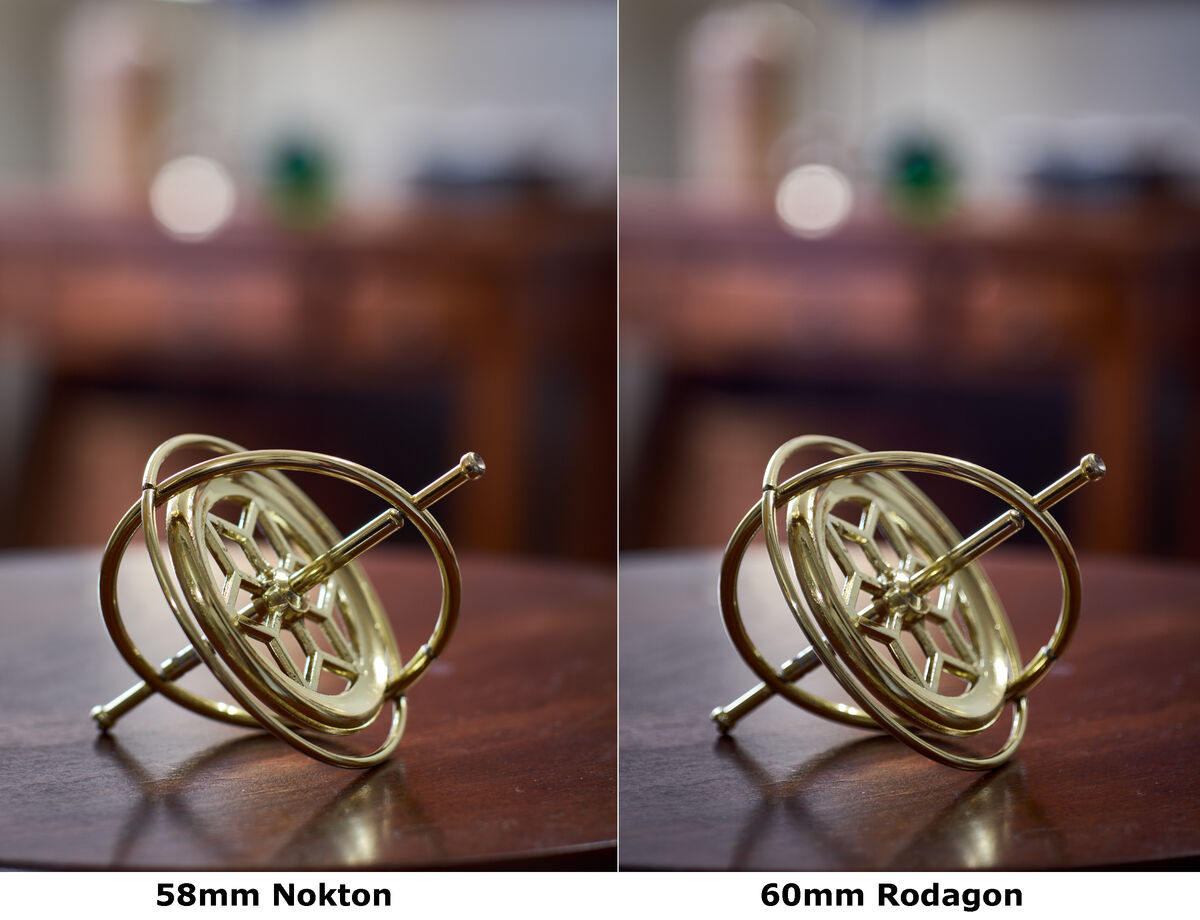Bokeh
May 21, 2023 22:49:22 #
User ID wrote:
That "definition" concerning specular hi... (show quote)
What is the signifacance of the photograph in your reply? It doesn't seem to have anything to do with this discussion.
May 21, 2023 23:06:31 #
CamB wrote:
What is the signifacance of the photograph in your reply? It doesn't seem to have anything to do with this discussion.
There are now three similar photographs. Agreed that any one sample alone would demonstrate nothing.
May 22, 2023 00:24:51 #
Orphoto
Loc: Oregon
EL S. Usually i look forward to your contributions. This time you are adding to the disinformation. The chatacter of the blur is most easily seen in out of focus specular highlight. These misnamed "bokeh balls" are not what we are referring to per se. They allow you though to see various characteristics more easily. Go back to the link provided on page 1 by Ysarex for a perfect discussion with graphic examples.
These attributes are arcane as all get out. Very few people notice or care about them. They rarely add or detract from photos. And yet they are what the term bokeh refers to. Popular parlance is butchering the term. Even the linked article from the Nikon site only gets it partly right.
These attributes are arcane as all get out. Very few people notice or care about them. They rarely add or detract from photos. And yet they are what the term bokeh refers to. Popular parlance is butchering the term. Even the linked article from the Nikon site only gets it partly right.
May 22, 2023 04:35:05 #
Captvideo36 wrote:
This day Lilly is one of my favorite uses of bokeh. Best to you….
Love those two Lilly images.
May 22, 2023 04:40:01 #
So I guess I “cheated” with this photo, shot on auto at Longwood gardens. Or perhaps this isn’t what you’d call bokeh? Idk but I kinda like the effect.

May 22, 2023 05:00:46 #
SalvageDiver wrote:
Bokeh is a function of the lens, lighting and pers... (show quote)
Yes, interesting, lots of lenses giving different effects. Not sure how I would use the information. As far as I can tell I have one of the "normal" lenses he talks about and shows an image thru a window illustrating the bokeh that lens produced for him. This was the (Asahi-Pentax) Super Takumar 50mm f/1.8. It might be interesting to see if I can intentionally get various bokeh with some of the lenses I own.
May 22, 2023 06:58:56 #
May 22, 2023 09:47:53 #
The ability to seamlessly move from a focused are to an out of focus area.
Every lens can produce it...with varying success.
The design of the lens has everything to do with performance.
This is shot at f/8. Nice transition... because the lens is designed to do just that...in the right circumstances (that part is on you).
Nice shot Susan...gorgeous.
Every lens can produce it...with varying success.
The design of the lens has everything to do with performance.
This is shot at f/8. Nice transition... because the lens is designed to do just that...in the right circumstances (that part is on you).
Nice shot Susan...gorgeous.

May 22, 2023 11:17:46 #
Ysarex
Loc: St. Louis
Curse the Internet -- humanity's largest and fastest growing repository of misinformation.
Here's an example of what bokeh is (and is not). Hopefully a couple folks will see this and understand which is good, but at the same time the Internet will misinform 10 times as many and the misunderstanding of what bokeh is will be further reinforced. We're not going to win and that's kind of scary.
I have two lenses of very similar focal length. A 58mm Voigtlander Nokton and a 60mm Rodenstock Rodagon. So I used both to take almost the exact same photo -- camera on a tripod unmoved, subject unmoved and same f/stop (f/4) for each photo.
Both have similar out of focus backgrounds. An out of focus background is not bokeh. I can create an out of focus background which I did in these photos. I did not however create bokeh. Bokeh is the manner in which the specific lens renders the out of focus background. Both of my lenses produce bokeh and the bokeh they produce is different. (I prefer the 58mm Nokton which is smoother). You can easily see the difference in the two photos side by side. The Rodagon's bokeh has more distinct light/dark transitions -- almost false lines created by the lens. Just to the left and behind the white ball is a cylindrical lidded ceramic jar. The bokeh of the Rodagon seems to outline that jar while the bokeh of the Nokton is creamy smooth. Bokeh is how your lens renders the out of focus background. And you can see that for photographers who do a lot of say portrait work and want the background out of focus the bokeh created by different lenses can matter. I'd rather have the bokeh from my 58mm Nokton than the 60mm Rodagon in a portrait.
Here's an example of what bokeh is (and is not). Hopefully a couple folks will see this and understand which is good, but at the same time the Internet will misinform 10 times as many and the misunderstanding of what bokeh is will be further reinforced. We're not going to win and that's kind of scary.
I have two lenses of very similar focal length. A 58mm Voigtlander Nokton and a 60mm Rodenstock Rodagon. So I used both to take almost the exact same photo -- camera on a tripod unmoved, subject unmoved and same f/stop (f/4) for each photo.
Both have similar out of focus backgrounds. An out of focus background is not bokeh. I can create an out of focus background which I did in these photos. I did not however create bokeh. Bokeh is the manner in which the specific lens renders the out of focus background. Both of my lenses produce bokeh and the bokeh they produce is different. (I prefer the 58mm Nokton which is smoother). You can easily see the difference in the two photos side by side. The Rodagon's bokeh has more distinct light/dark transitions -- almost false lines created by the lens. Just to the left and behind the white ball is a cylindrical lidded ceramic jar. The bokeh of the Rodagon seems to outline that jar while the bokeh of the Nokton is creamy smooth. Bokeh is how your lens renders the out of focus background. And you can see that for photographers who do a lot of say portrait work and want the background out of focus the bokeh created by different lenses can matter. I'd rather have the bokeh from my 58mm Nokton than the 60mm Rodagon in a portrait.
May 22, 2023 12:37:00 #
dennis2146 wrote:
With all due respect, what do you mean, you don't make it happen. I make it happen all the time when I take photographs of flowers and want to isolate the flower from the background. I can take the photograph at f16 to include, in focus much of the background beyond and in front of the flower OR I can use f2.8 or maybe f4 to isolate the flower from the background. In the attached photo I made that happen.
So please tell me how I am not making it happen?
Dennis
So please tell me how I am not making it happen?
Dennis
You used DOF to separate the foreground from the background. There’s no “bokeh” to speak of in that shot. It is about the quality of the out of focus light, not simply being out of focus.
May 22, 2023 13:04:01 #
Orphoto
Loc: Oregon
sunsandwater wrote:
So I guess I “cheated” with this photo, shot on auto at Longwood gardens. Or perhaps this isn’t what you’d call bokeh? Idk but I kinda like the effect.
Hi Susan. Are these out of focus highlights bokeh? No. But....they are a fairly good teaching example.
How might one refer to the characteristics of these out of focus highlights?? Take a look at the edges of several of them. Notice for instance that some of the purple ones show a hard outer line that is a dark blue. White ones show a greenish edge. Having a hard edge and a differing color are considered unpleasant aspects of the blur.
Other questions asked in examining bokeh include, is the interior solid or does it have an onion ring effect? Can you see the polygon from the aperture blades or is it truly round? Is there a secondary ring around the edge?
Susan your example also shows some of the secondary rings as well as the aperture geometry. Onion ring is often from aspherical glass elements in the lens.
Who actually looks at images this way? For the most part, optical nerds.
Just be careful using the term bokeh. Most of the time you will be better served just referring to it as blur.
May 22, 2023 13:08:39 #
Orphoto
Loc: Oregon
Canisidrus, Nice image. And yes, pleasant transitioning out of focus is a very desirable trait concerning blurs. Does it define or demonstrate bokeh....no.
In this case, the background is sufficiently blurred that no discernible edge effects can be seen. Hence nothing good or bad can be said concerning the bokeh.
In this case, the background is sufficiently blurred that no discernible edge effects can be seen. Hence nothing good or bad can be said concerning the bokeh.
May 22, 2023 13:20:39 #
Orphoto wrote:
Hi Susan. Are these out of focus highlights bokeh... (show quote)
I have to disagree. The question here isn’t whether it’s bokeh or not. It qualifies as bokeh. The question is whether it’s good bokeh or not.
May 22, 2023 13:30:25 #
May 22, 2023 13:33:25 #
Orphoto
Loc: Oregon
Superfly, I replied to her image that way because most folks here are wrongly equating the presence of this sort of blur as bokeh. As you note, whether it is pleasant, neutral, nervous or any other such characterization is a different aspect of it.
Susan was fairly clearly saying she liked the effect of out of focus specular highlights. That's cool. But I seriously doubt she was going beyond that.
Susan was fairly clearly saying she liked the effect of out of focus specular highlights. That's cool. But I seriously doubt she was going beyond that.
If you want to reply, then register here. Registration is free and your account is created instantly, so you can post right away.







